Pasta Puttanesca
on Apr 30, 2023, Updated May 07, 2025
This post may contain affiliate links. Please read our disclosure policy.
This lusty, vibrant 30-minute pasta with garlic, capers, olives and anchovies will wake up your taste buds in a hurry.
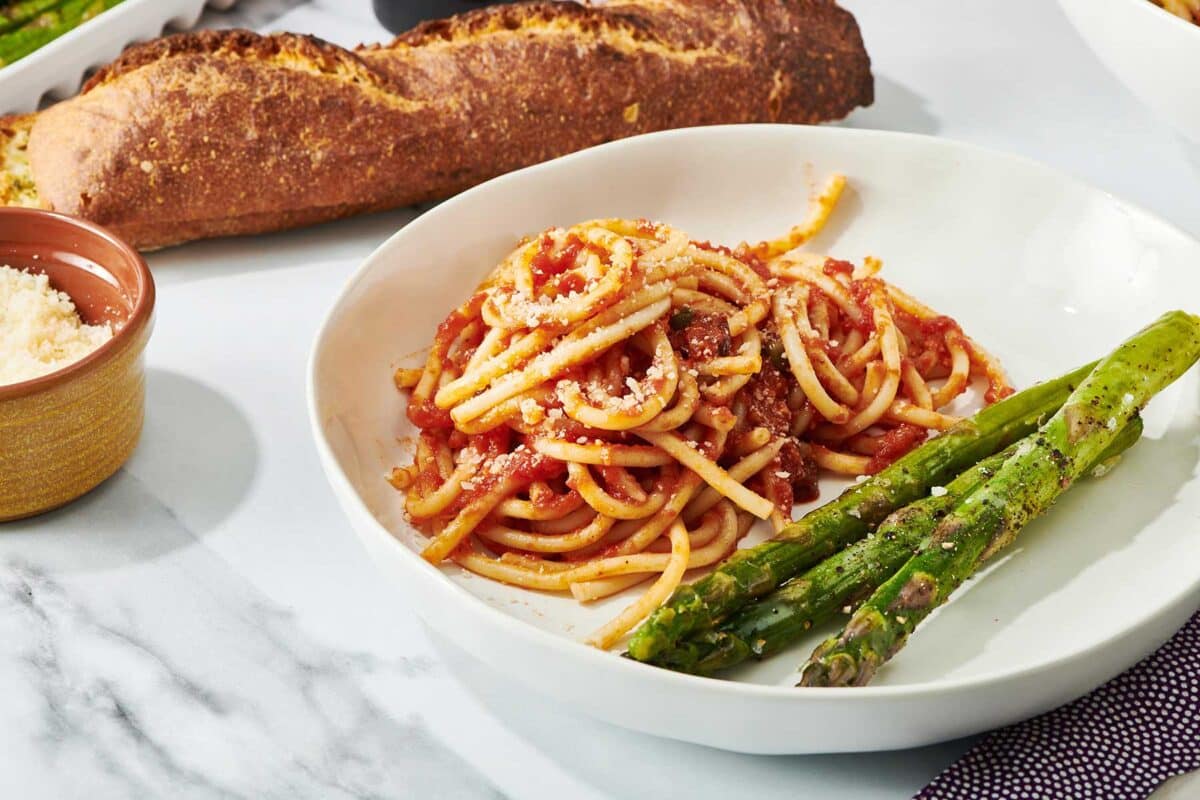
Puttanesca is one of my favorite pasta sauces, and that’s saying a lot! The salty, pungent ingredients make it truly exciting to eat and keep your mouth highly entertained. This is a tomato sauce with personality and gumption, and it can be on the table in 30 minutes.
Puttanesca sauce on its own is called sugo alla Puttanesca in Italy. It is always made with olive oil, garlic, tomatoes, and capers. Anchovies and olives are very common additions, though not always used in different areas of Italy. Parsley and oregano may also be added, as well as other herbs. Chopped chili peppers are another common variation. The ingredients of puttanesca vary, of course, from cook to cook, but the following recipe features all of my favorite components!
By signing up, you agree to our Privacy Policy.
I love bucatini with puttanesca because when the pasta is tossed with the sauce, some of the sauce finds its way up the channel of the thick, long noodle. Plus, bucatini just has a very satisfying chewy bite because of the thickness of the noodle and the hollow down the middle.
You might also be interested in Homemade Marinara Sauce, Quick and Easy Bolognese Sauce, or Penne all’Arrabbiata (this last one also has a lot of personality!).
What's In This Post?
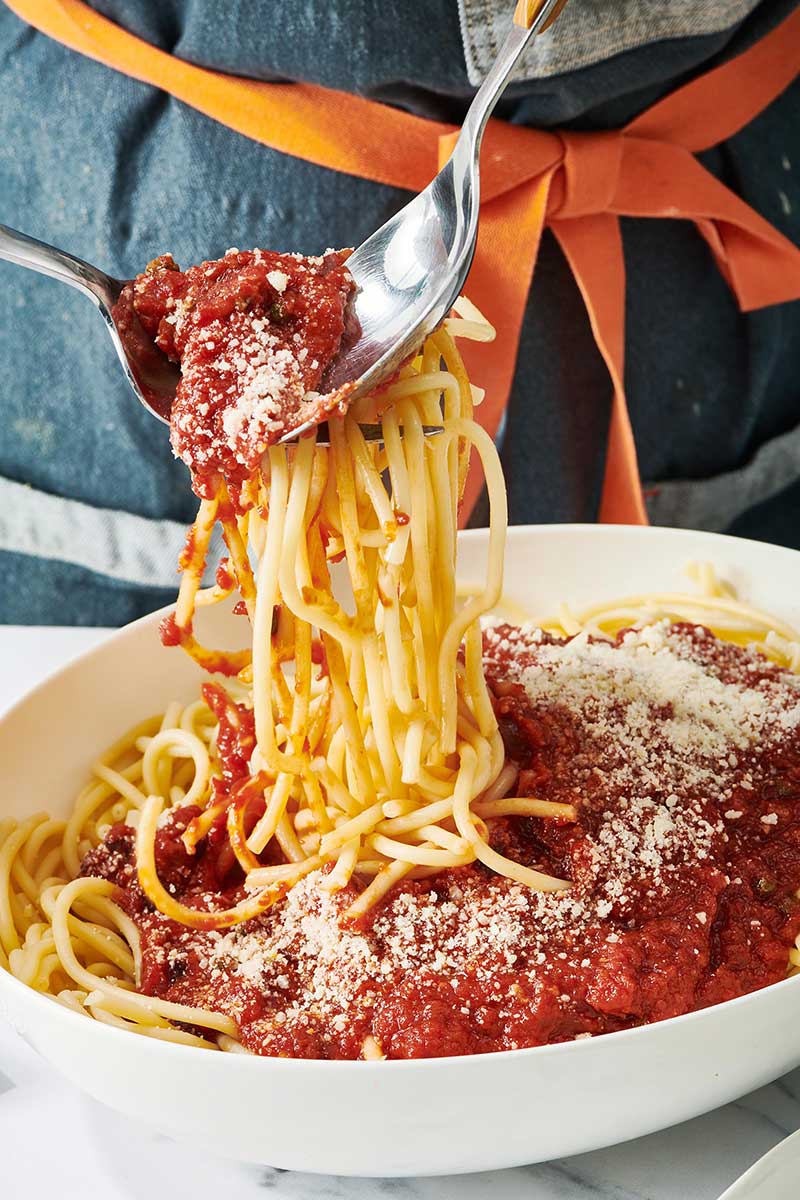
Pasta Puttanesca: This lusty, vibrant (30 minute!) sauce with garlic, capers, olives and anchovies will wake up your taste buds in a hurry.
Ingredients
- Pasta – Bucatini and spaghetti are the most popular pasta pairings for Puttanesca. But you can also try it with other long thin pastas, like fettuccine, or a shorter chunkier shape, like penne, rigatoni, or ziti.
- Extra-virgin olive oil
- Chili peppers – A variety of chili peppers may be added to puttanesca. I like the pickley addition of a jarred pepperoncini or yellow bird pepper. You can also add some red pepper flakes towards the end for another bit of heat.
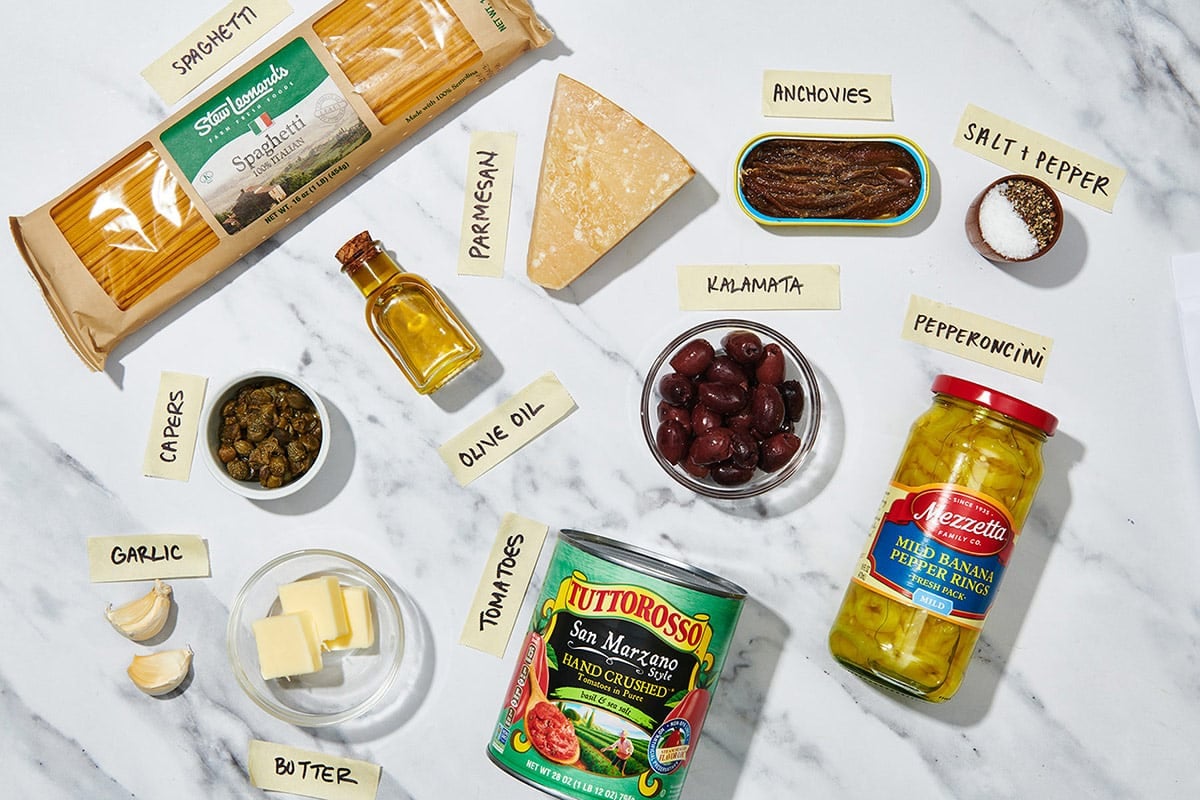
- Garlic cloves – Garlic is the underpinning of this robust sauce and most robust tomato-based Italian sauces.
- Anchovy fillets – Anchovies have a deep flavor, a salty umami-ness that adds depth to the sauce. A small amount won’t impart a notably fishy flavor at all. The only reason to skip it is if you are vegetarian.
- Capers – Another salty pop of flavor from these pickled little berries. Capers are very common in Italian and other Mediterranean food.
- Black olives – Kalamata olives and Gaeta are two commonly used olives in Puttanesca sauce. Don’t use salt-cured olives here as they will be too salty for this dish. Pitted olives, they are easier to chop.
- Canned tomatoes – You can use crushed tomatoes in their juice or buy whole tomatoes in their juice and crush them yourself. You can do this by chopping them on a cutting board, squeezing them into small pieces with your hands, or giving them a quick pulse in the food processor.
- Butter – It may seem surprising to see a bit of butter added at the end, but it amplifies all of the acidic, salty, piquant flavors of the sauce and smooths things out with a bit of richness. Don’t skip the butter, please – fat adds flavor!
How to Make Pasta Puttanesca
- Make the sauce: Sauté the garlic, pepperoncini (if using), and anchovies, then add the capers, olives, and tomatoes. Simmer for about 15 minutes.
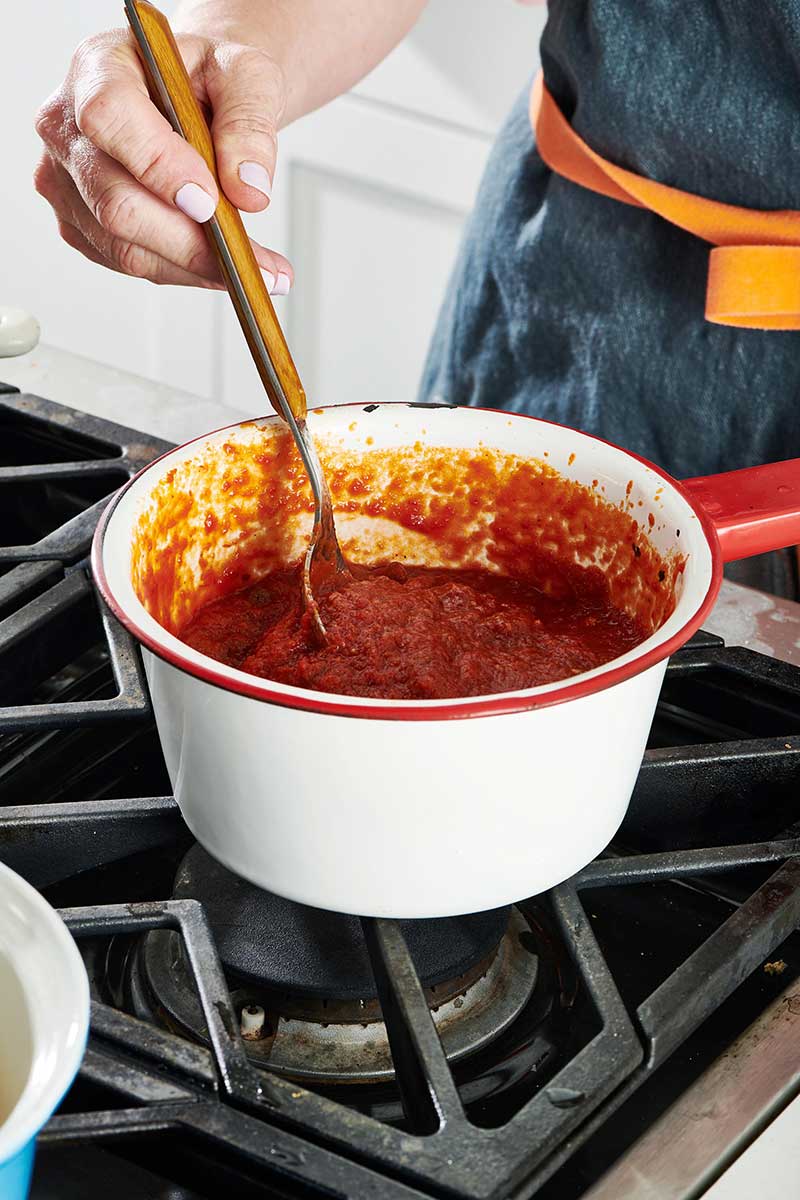
- Cook the pasta: Meanwhile, cook the pasta according to package directions. Drain the pasta, return it to the pot, then add the butter and toss the pasta until the butter is melted.
- Combine and serve: Add half of the sauce to the pasta and toss to combine thoroughly. Add the rest of the sauce to the pasta and toss until everything is well combined. Transfer to a serving bowl and serve with the Parmesan passed on the side.
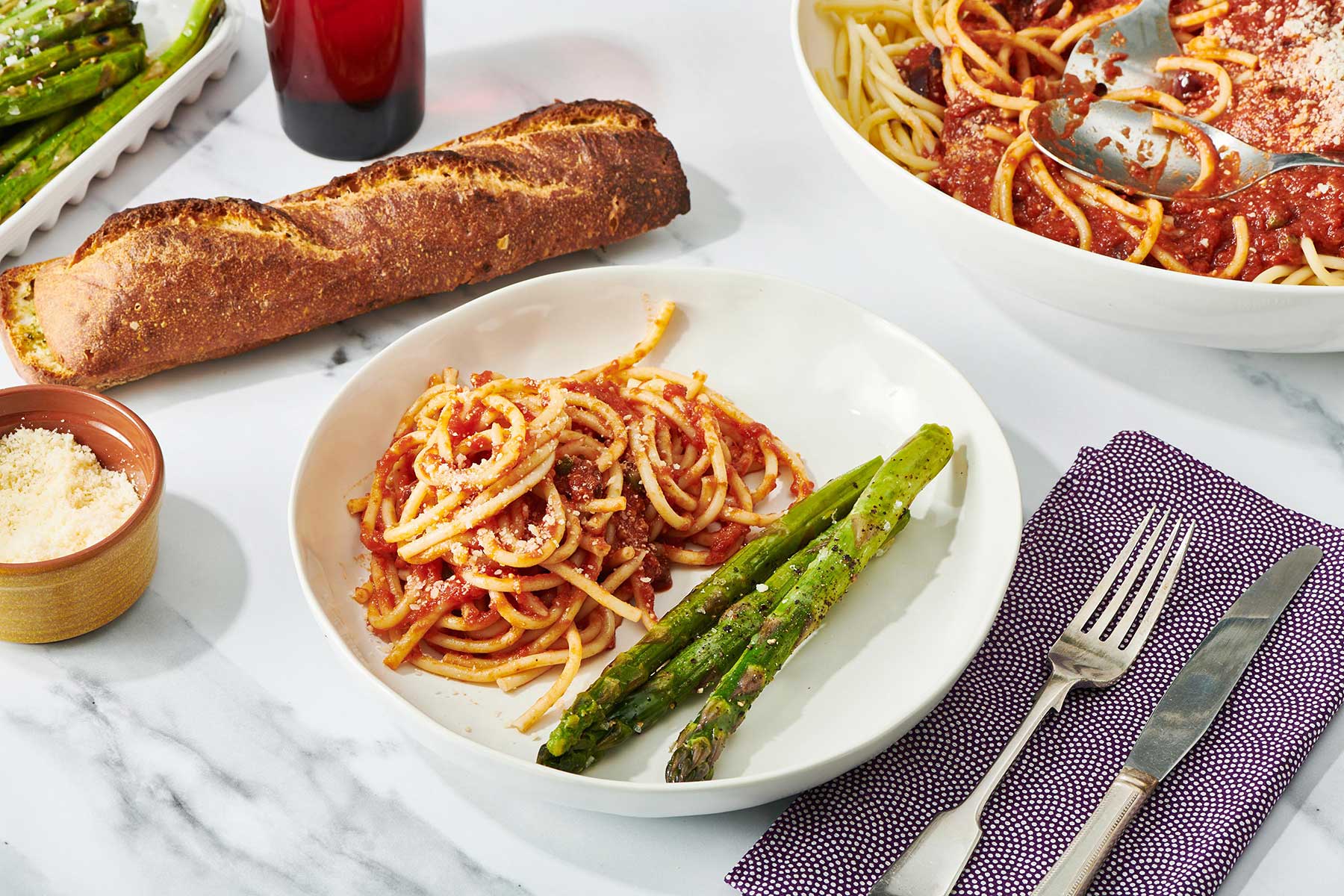
FAQs
There is sweetness from the tomatoes and olive oil but also a big salty kick from the olives, capers, anchovies, peppers, and garlic. It’s a much more robust and intensely flavored sauce than some of its simpler tomato sauce counterparts.
Why pasta puttanesca? The name of this robust Italian pasta sauce is as titillating as the sauce itself. Spaghetti alla Puttanesca is apparently so named because in the mid-20th century in Naples, Italy, the Puttante (prostitutes) would make this dish; it was quick and hearty to fortify themselves between clients. I guess something about the lustiness of the sauce matching the lusty-ness of a street worker’s work?
Another theory is that prostitutes made it for their clients. Another suggestion is that philandering Italian housewives made this quick dish for their husbands before they slipped out to meet their lovers. Hard to connect all the dots here. But no matter what the origin, this is a very potent sauce!
Sure! Substitute about 2 teaspoons of anchovy paste instead of the 4 anchovy filets.
Cooking Tips
- Cook the pasta just until al dente.
- Add the sauce to the pasta in two batches, which helps it absorb more easily.
- You can also add as much of the sauce as you think the pasta needs and pass any remaining sauce on the side for people to add to their plates as they wish.
- Leftovers can be stored for up to 5 days in the fridge in an airtight container.
- Finish the dish with a sprinkle of fresh parsley for a hit of freshness.
What to Serve With Pasta Puttanesca
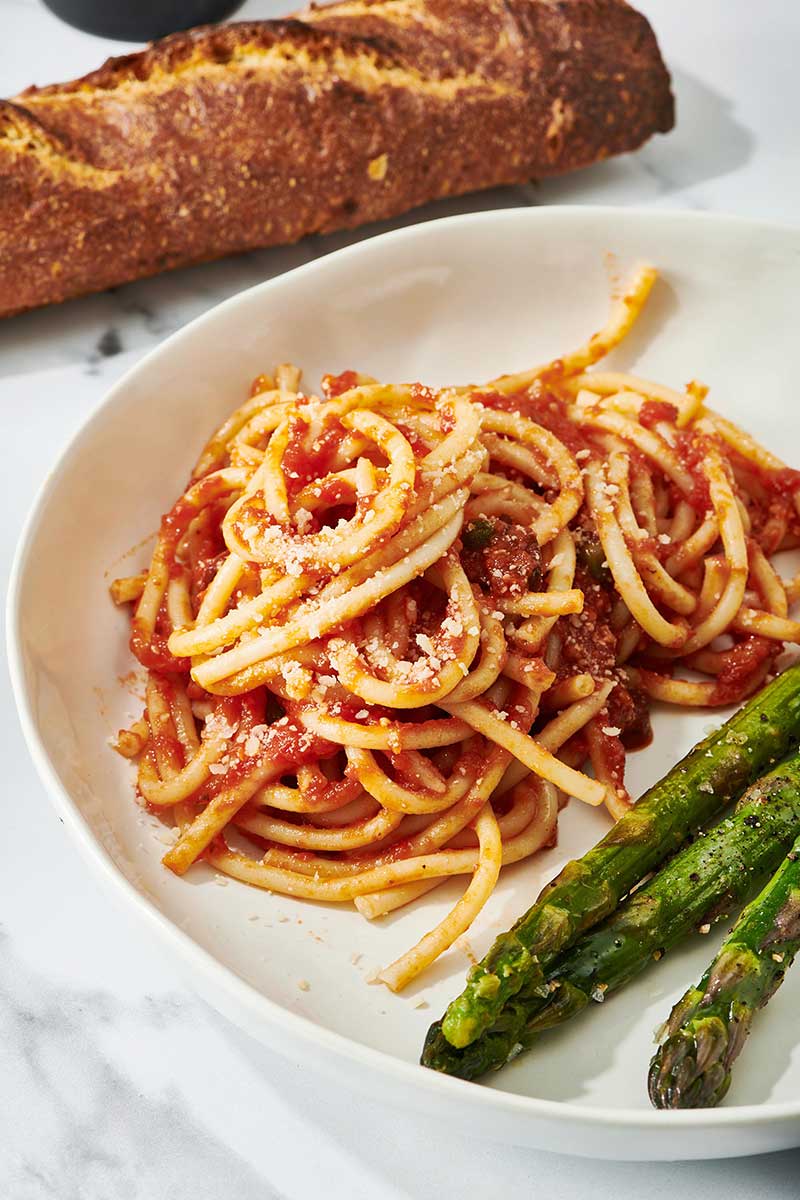
More Pasta Recipes
Pin this now to find it later
Pin It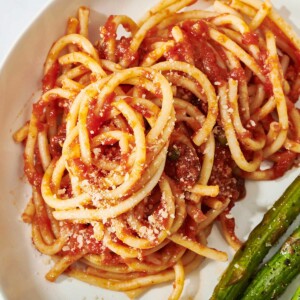
Pasta Puttanesca
Ingredients
- ¼ cup olive oil
- 2 teaspoons finely minced garlic
- 1 pepperoncini or pickled yellow pepper (minced, optional)
- 4 anchovies (rinsed and chopped; see Notes)
- 1 tablespoon capers (rinsed and drained)
- ¾ cup coarsely chopped kalamata or other cured black olives
- 1 (28-ounce) can crushed tomatoes in juice
- Kosher salt and freshly ground black pepper (to taste)
- 1/2 teaspoon red pepper flakes
- 1 pound dried bucatini or spaghetti
- 2 tablespoons unsalted butter (softened)
- Freshly grated Parmesan (to serve)
- Chopped fresh flat-leaf parlsey to serve (optional)
Instructions
- In a large saucepan, heat the olive oil over medium heat. Add the garlic, pepperoncini (if using), and anchovies, and cook, stirring, for 2 minutes until the garlic turns golden and fragrant. Add the capers, olives, and tomatoes. Turn the heat to medium-high and bring to a simmer. Lower the heat, and continue to simmer for about 15 minutes. Add salt if needed (the capers, olives, and anchovies are all pretty salty, so you may want to skip the salt) and pepper, asw well as the red pepper flakes if using.
- Meanwhile, bring a large pot of salted water to a boil. Cook the bucatini or spaghetti according to package directions, until al dente. Drain the pasta, and return it to the pot. Add the butter and toss the pasta until the butter is melted. Add half of the sauce to the pasta and toss to combine thoroughly. Add the rest of the sauce to the pasta and toss until everything is well combined.
- Give the pasta a sprinkle of fresh parsley if you like. Transfer to a serving bowl and serve with the Parmesan passed on the side.
Notes
- Cook the pasta just until al dente.
- Add the sauce to the pasta in two batches, which helps it absorb more easily.
- You can also add as much of the sauce as you think the pasta needs and pass any remaining sauce on the side for people to add to their plates as they wish.
- You can use crushed tomatoes in their juice or buy whole tomatoes in their juice and crush them yourself. You can do this by chopping them on a cutting board, squeezing them into small pieces with your hands, or giving them a quick pulse in the food processor.
- You can use 2 teaspoons of anchovy pasta instead of the filets if you have that on hand.
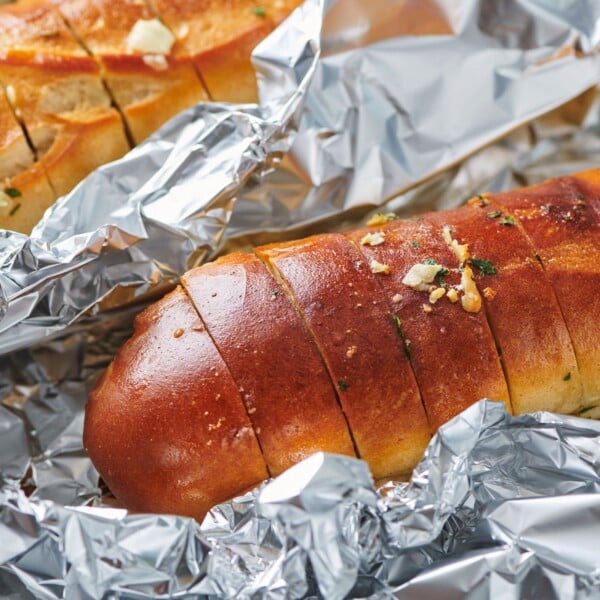
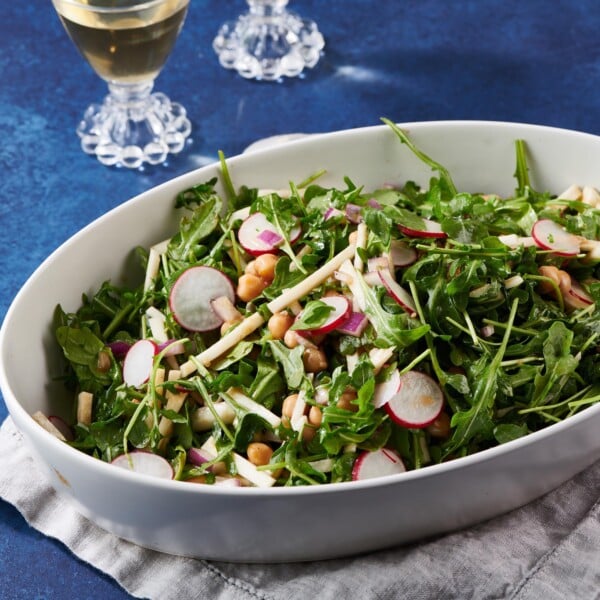
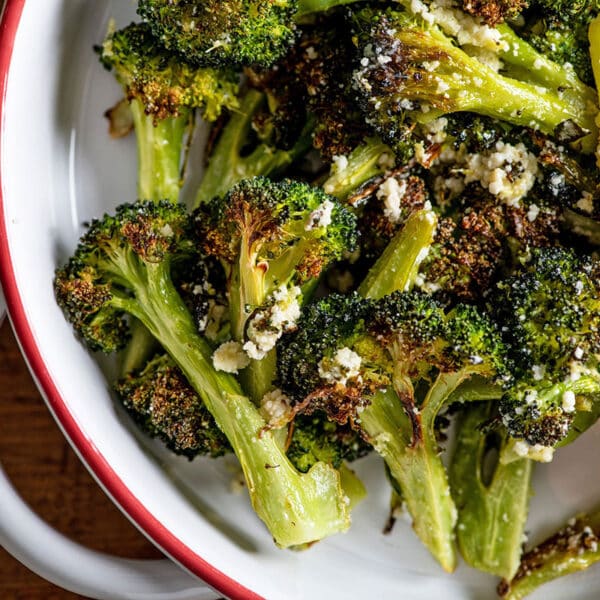
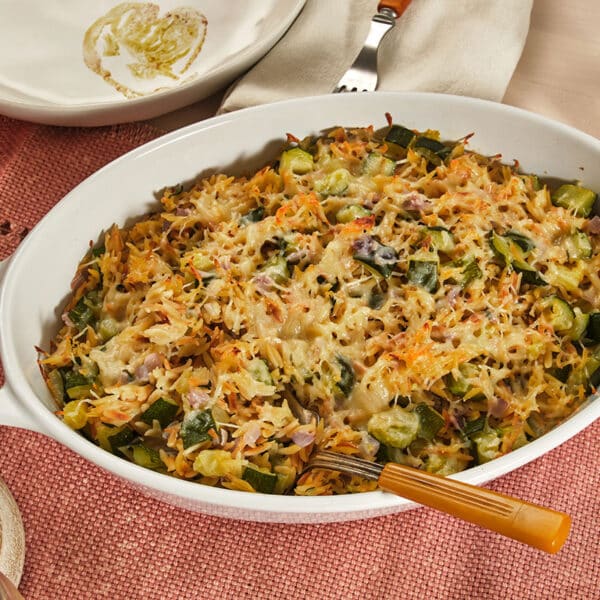
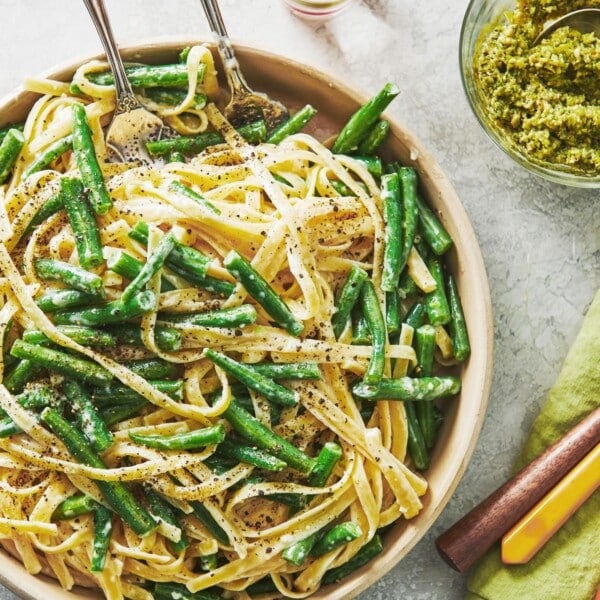
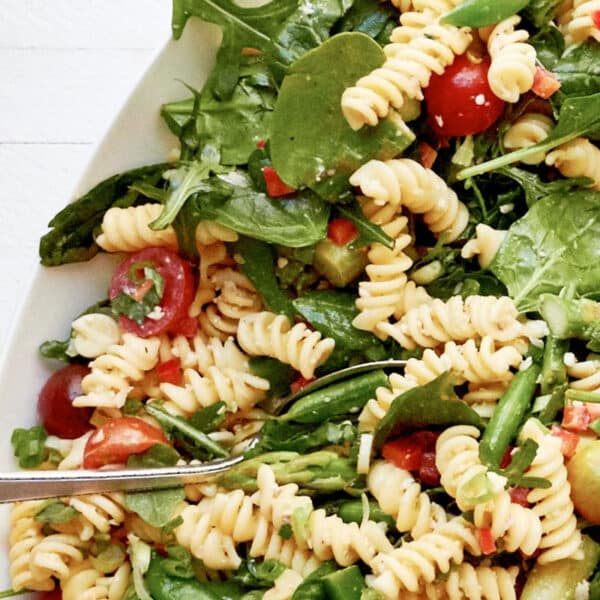
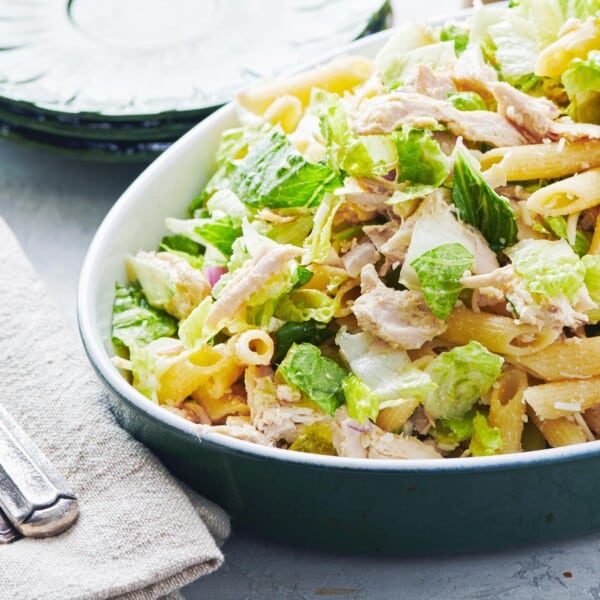









full of depth and taste but so easy to make for a family last minute!